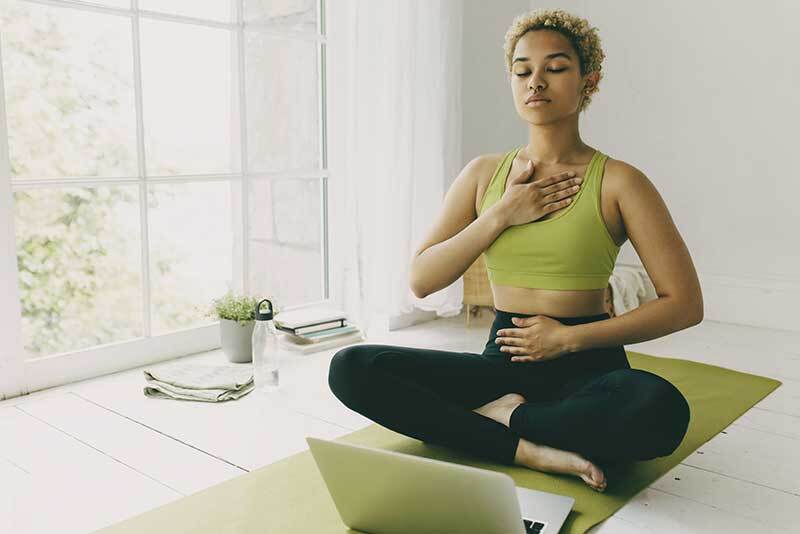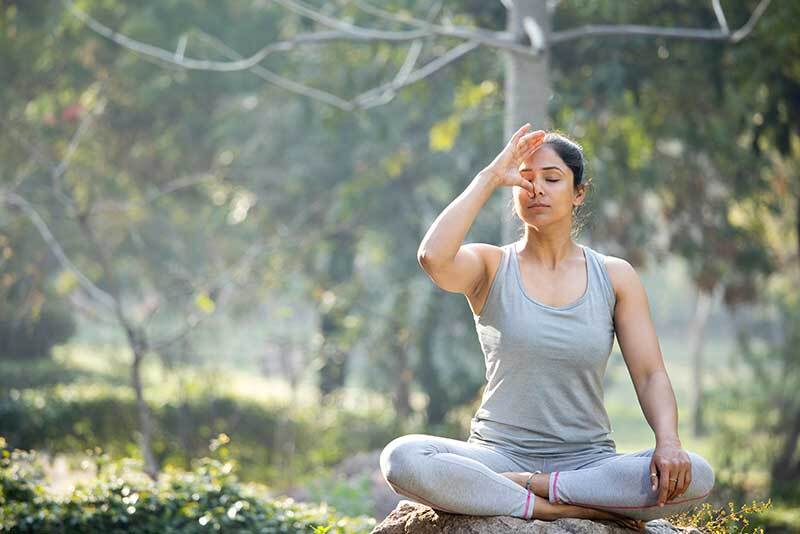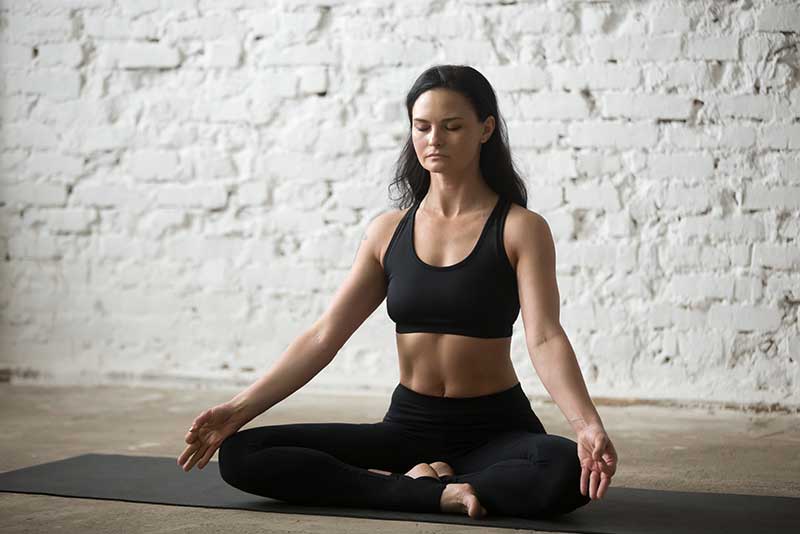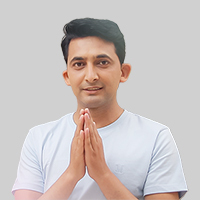Feeling a bit anxious or down? Don’t worry, we’ve got your back! It’s time to take a deep breath and explore the wonderful world of pranayama. Picture this: you sitting comfortably, focusing on your breath, and waving goodbye to those pesky worries. In this blog, we’ll be your trusty guide, telling you about the top four pranayama for anxiety and depression. Apart from that we will also tell you how our breathwork can be helpful in getting rid of anxiety and depression. So, grab your imaginary yoga mat and let’s dive into the calming ocean of breathwork. Get ready to breathe your way to blissful tranquillity and wave goodbye to those gloomy clouds.
How Breathing Exercises Help Anxiety?
If you ever wonder can Pranayama help anxiety? Then we have scientific evidence to prove that it does help in curing anxiety and depression. Let’s understand how our breath can help in managing our mental state.
- Regulation of the Autonomic Nervous System (ANS): Pranayama techniques, such as deep diaphragmatic breathing and alternate nostril breathing, are known to activate the parasympathetic branch of the ANS, which promotes relaxation and counters the effects of the sympathetic “fight-or-flight” response. This regulation of the ANS may help reduce anxiety levels.
- Improvements in Respiratory Function: Anxiety is often associated with dysfunctional breathing patterns, including shallow and rapid breathing. Pranayama encourages slow, deep breathing, which helps increase oxygen supply and improve respiratory efficiency. By improving respiratory function, pranayama may alleviate anxiety symptoms.
- Mindfulness and Focus: Pranayama requires focused attention on the breath, promoting mindfulness and redirecting attention away from anxious thoughts. Mindfulness-based interventions have shown promise in reducing anxiety symptoms.
Now that we have understood how our breathing practices impact our overall well being, let’s explore some breathing exercises for depression and anxiety.
Breathing Exercises For Depression And Anxiety
Below are some of the best breathing techniques and exercises that can help you in dealing with the symptoms of depression and anxiety.
1. Deep Belly Breathing (Diaphragmatic Breathing)

Deep belly breathing, also known as diaphragmatic breathing, is a simple yet powerful technique that focuses on breathing deeply into the belly rather than shallow chest breathing. By engaging the diaphragm, we activate the relaxation response and stimulate the parasympathetic nervous system, which promotes a sense of calmness and reduces anxiety and stress. To practise deep belly breathing, find a comfortable seated position, place one hand on your chest and the other on your belly. Inhale deeply through your nose, allowing your belly to expand as you fill your lungs with air. Exhale slowly through your nose, feeling your belly gently contract. Repeat this process for several minutes, gradually lengthening your breath.
2. Alternate Nostril Breathing (Nadi Shodhan Pranayama)

Alternate nostril breathing, or Nadi Shodhan Pranayama, is a powerful technique for balancing the energy channels in the body. By practising this technique, we aim to create harmony and equilibrium within ourselves. It helps regulate emotions, reduces anxiety, and enhances mental clarity. To practise alternate nostril breathing, find a comfortable seated position. With your right hand, use your thumb to gently close your right nostril and your ring finger or pinky finger to close your left nostril. Start by closing your right nostril and inhaling slowly through your left nostril. Then, close your left nostril, release your right nostril, and exhale through the right nostril. Inhale through the right nostril, close it, and exhale through the left nostril. Repeat this pattern for several minutes, focusing on the smooth flow of breath and maintaining a relaxed state of mind.
3. Sheetali Pranayama (Cooling Breath)
Sheetali Pranayama, also known as Cooling Breath, is a pranayama technique that helps calm the mind and reduce anger, frustration, and irritability. This technique involves inhaling through a rolled tongue or pursed lips, creating a cooling sensation in the body. To practise Sheetali Pranayama, sit in a comfortable position and roll your tongue into a tube shape. Inhale deeply through the rolled tongue, feeling the coolness of the breath. Close your mouth and exhale slowly through your nose. If you are unable to roll your tongue, you can purse your lips, creating a small opening, and inhale through that opening. Repeat this cycle for several rounds, allowing the cooling breath to soothe your mind and bring a sense of tranquillity.
4. Kapalabhati Pranayama (Skull-Shining Breath)

Kapalabhati Pranayama, also known as Skull-Shining Breath, is an invigorating pranayama for depression that releases tension, clears the mind, and uplifts mood. This technique involves forceful exhalations and passive inhalations. To practise Kapalbhati Pranayama, sit in a comfortable position with an upright spine. Take a deep breath in and exhale forcefully through your nose by contracting your abdominal muscles. The inhalation will happen naturally as you release the contraction. Start with a slow pace and gradually increase the speed of exhalations. Repeat this process for several rounds, focusing on the sensation of energy and clarity that arises within you.
Bottomline
Pranayama offers a holistic approach to managing anxiety and depression by harnessing the power of the breath. These four pranayama techniques – Deep Belly Breathing, Alternate Nostril Breathing, Sheetali Pranayama, and Kapalbhati Pranayama – can be invaluable tools in your self-care toolkit. Remember, consistency and regular practice are key to experiencing the full benefits of pranayama. Embrace these breathing techniques with an open heart and mind, and allow them to guide you towards emotional well-being, inner peace, and a renewed sense of vitality. As always, consult a healthcare professional if you have any specific concerns or conditions. Take a deep breath, exhale the worries, and embark on your journey to greater emotional well-being through pranayama.
FAQs
Q. Can anxiety be cured with pranayama?
Ans. There is no definitive cure for anxiety, and pranayama alone may not completely eliminate anxiety. However, pranayama techniques have the potential to help manage and reduce anxiety symptoms when used in combination with healthy lifestyle habits. It is important to approach anxiety treatment holistically.
Q. Which pranayama is best for anxiety?
Ans – Deep diaphragmatic breathing is considered one of the most effective pranayama techniques for anxiety. It involves slow, deep breaths that engage the diaphragm fully. This technique activates the parasympathetic nervous system, promoting relaxation and reducing anxiety symptoms.
Resources
https://www.ncbi.nlm.nih.gov/pmc/articles/PMC6137615/
https://pubmed.ncbi.nlm.nih.gov/16131297/
https://www.ncbi.nlm.nih.gov/pmc/articles/PMC5679245/

Mr. Vijay Kumar Pandey is an eminent Yoga teacher with 15 years of experience. He excelled himself in Iyengar Yoga under the guidance of revered master BKS Iyengar Read More


